My incredible fourth day in Bhutan continued in the capital city, Thimphu. This country is extraordinary and visiting back in March of 2020 was a dream come true! Come along with me as I enjoy some delicious Bhutanese village food in Thimphu, Bhutan try my hand at archery, drink some ara, and enjoy a cultural performance!
I began my afternoon by heading to Simply Bhutan, a museum in the capital that shows how locals lived in remote areas of the country back in the day. There, we’d take a tour, have some ara (rice wine), see a traditional performance, and have some traditional Bhutanese food!
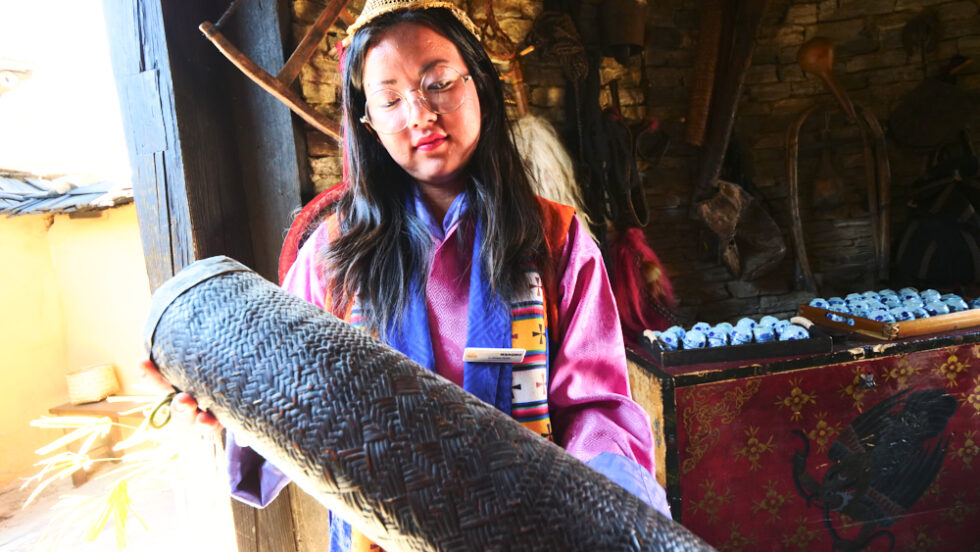
My guide Tsheten from MyBhutan and I went inside and met the woman who would be showing us around. We made our way to a stone hut of sorts, where we enjoyed some ara. The woman taught me that you dip your ring finger into the cup and then sprinkle the ara into the air. The ara was delicious and smoky. It was different from other ara I’d had. You can purchase some ara there and see the containers they use to store and transport it.
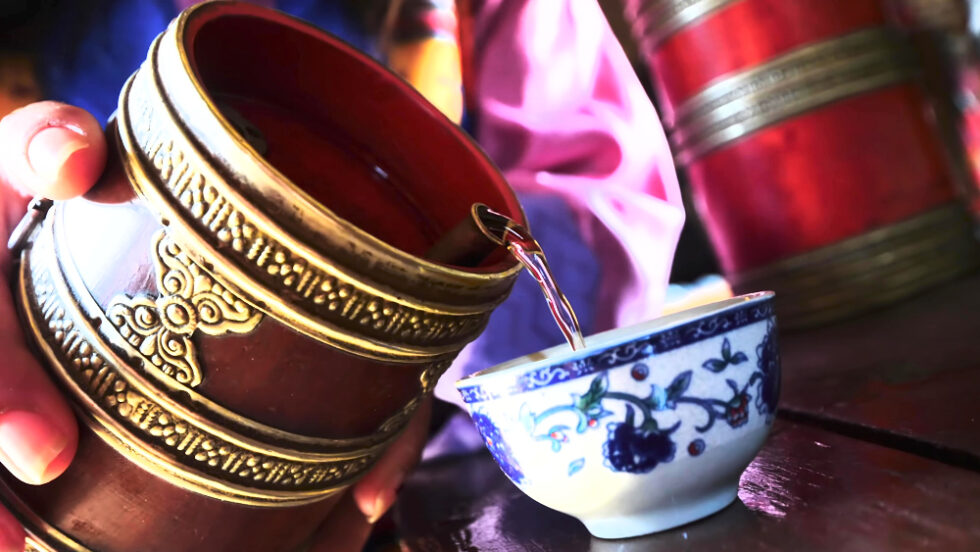
We also saw photographs of the unifier and first king, His Majesty Ugyen Wangchuck, and the second king, His Majesty Jigme Wangchuck. The third king, His Majesty Jigme Dorji Wangchuck, is known as the father of modern Bhutan. The fourth king—His Majesty Jigme Sigye Wangchuck—was the youngest, ruling at the age of seventeen. The current king is His Majesty Jigme Khesar Namgyel Wangchuck, who has ruled since 2006.
Further on, we saw the things they used to build mud houses and watched a cultural performance that featured a prayer song. The two men performed a song that they sing before they build a house. Then, we saw a stone tool that turn to grind rice flour. I also saw a stone bath, which contains rocks with minerals said to cure skin diseases. The best time to take one is after a hike!
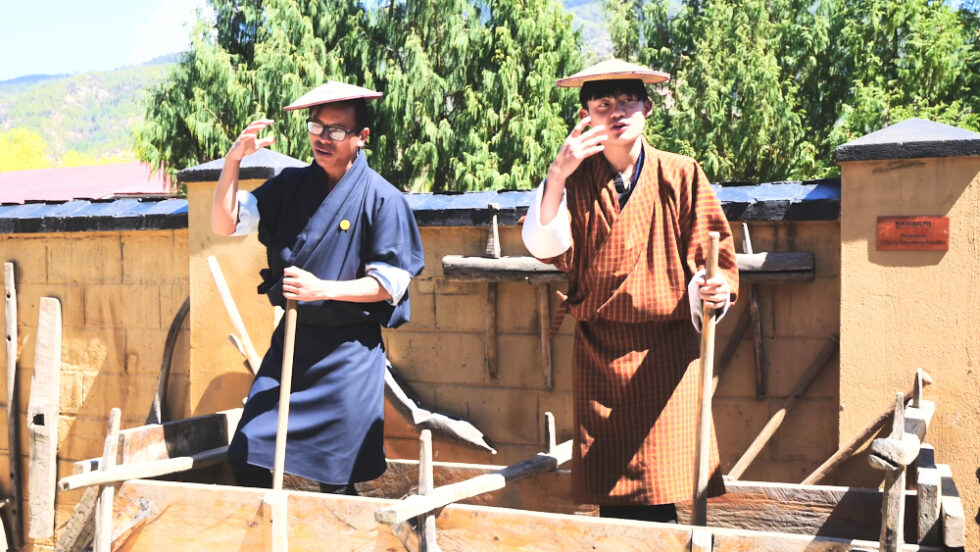
Next, we saw some colorful phalluses similar to the ones I saw at the temple of fertility Punakha. The divine madman used his phallus to subdue demons and bring down evil spirits. Hanging from the walls were dried red chilies, which are basically a vegetable in Bhutan. Then, we visited a traditional kitchen, where we saw the tool they use to make suja, or butter tea. It’s one of the national dishes. I also saw a traditional plate used by husband and wife that they would lick dry to clean them.
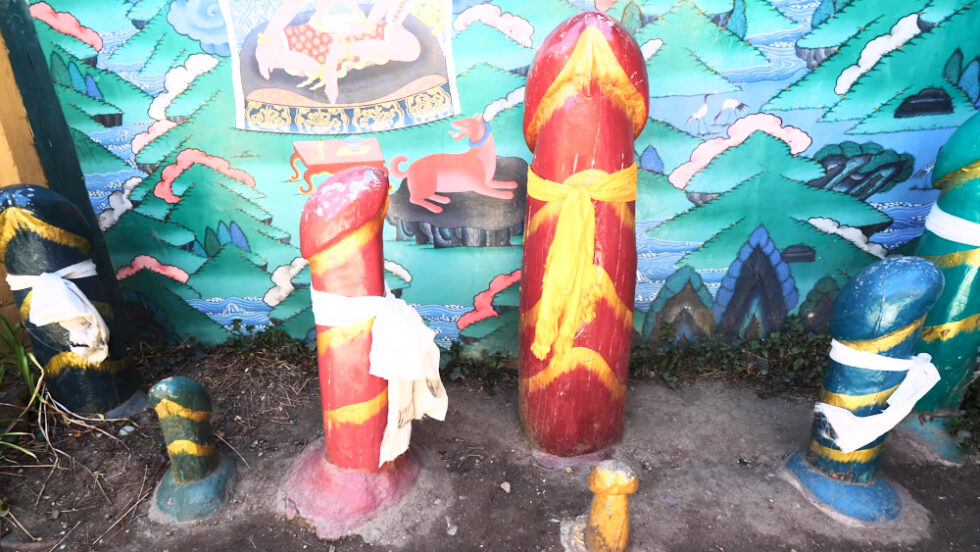
Then, we visited the souvenir shop, which sells the traditional Bhutanese gho, which is clothing for men. They cost 2,000 Nu/$26.38 USD. I tried one on with some help from the ladies in the shop. They’re roomy but are tight around the waist because of the belt. It creates a nice, big pocket on your left side. They wear socks and a type of pajamas underneath, but no pants. It cost an extra 500 Nu for the belt, so it was $32.97 USD in total. The only problem is, I wouldn’t know how to do it myself!
Then, we went to play some archery! They do a dance and song whenever someone hits the target. After another guy there hit the bullseye, it was my turn! I hit the target and joined the guys in their victory dance! Next, we headed to the dining hall to have lunch, where we saw another traditional performance featuring three women.
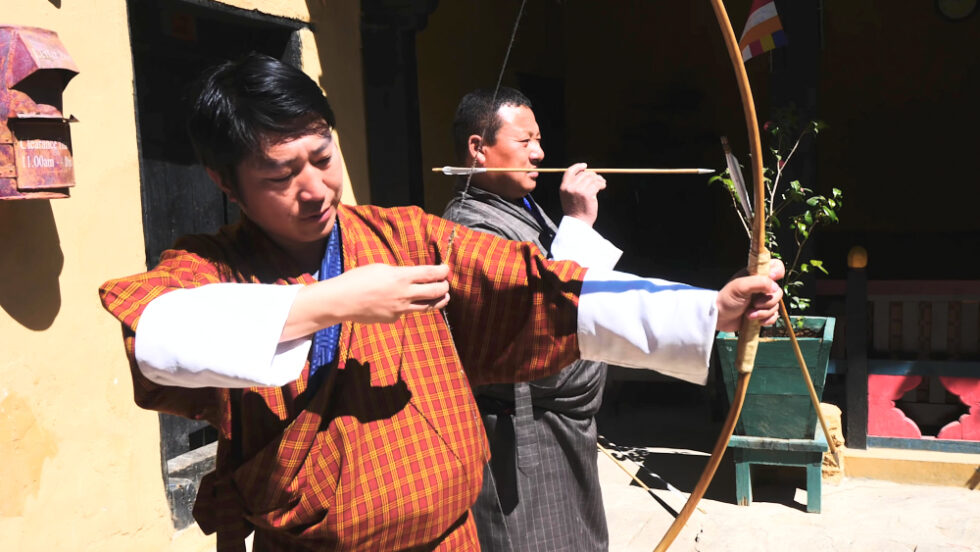
Our meal consisted of ema dashti, pork, ezay, chicken, rice, puffed rice, buckwheat noodles, and cabbage. We started with suja with puffed rice. I’m not a huge fan of the amount of butter in it, but it was better with the puffed rice in it. It’s a butter overload!

Then, I tried a creamy spinach soup, which was delicious. Next, I went with the cabbage, which was so fresh. It was a little creamy and had no chilies in it. I love cabbage and it was even better with the ezay, which wasn’t too hot. It seems like they made it to appeal to Westerners, but the Bhutanese village food in Thimphu, Bhutan was still blowing my mind.
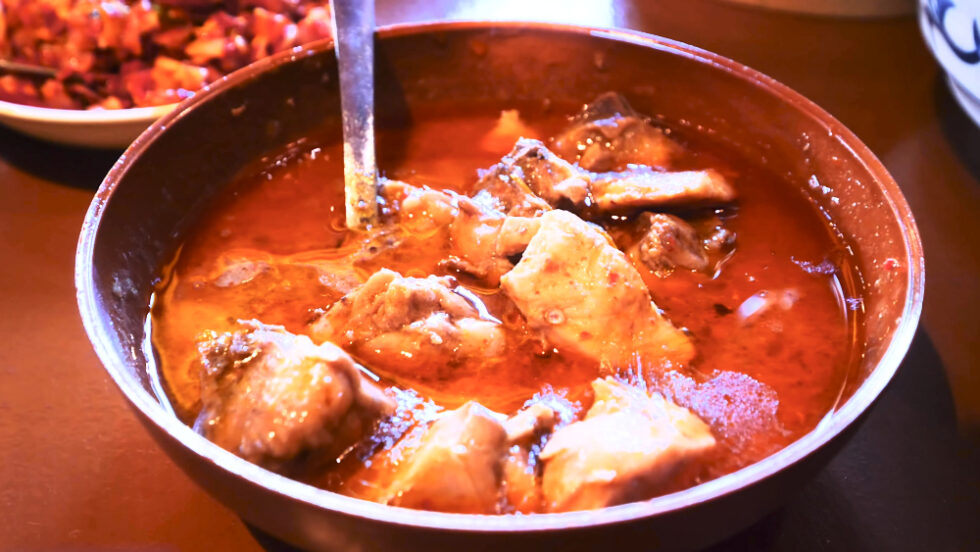
The ema dashti was spicy and creamy, and I loved the chicken and buckwheat noodles. I added the ezay to the noodles to add more flavor. The gravy from the chicken was great with the rice. I also had dried chilies, which tasted sweet, almost like they were caramelized. It also had some nice chili oil on it.
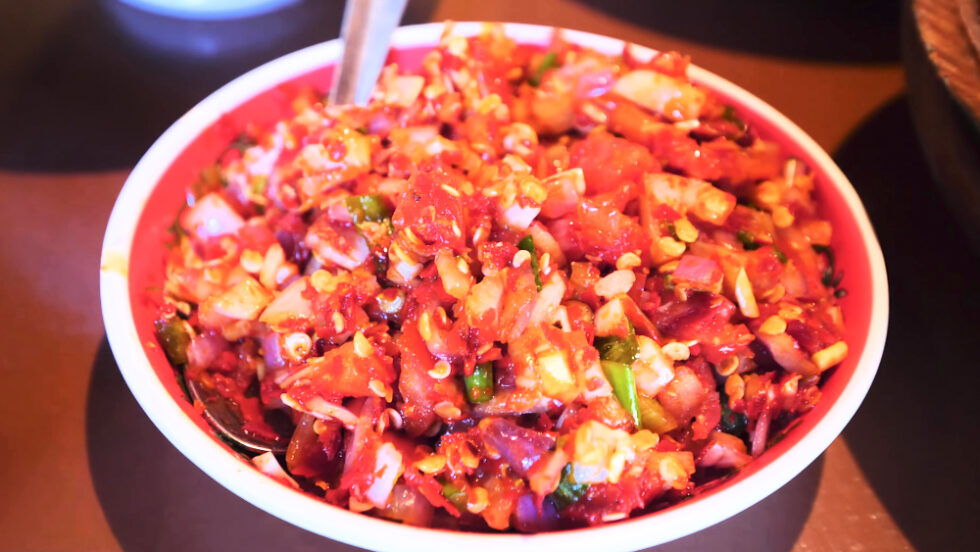
Then, I went with some radish and a nice, juicy, and oily piece of pork. I couldn’t get enough of it. But the best thing was the cabbage salad. I recommend mixing the ema dashti and the buckwheat noodles. It turned it into a creamy pasta dish!
I also enjoyed some more ara, which is mixed with sandalwood. The sandalwood gives it the smoky flavor. It’s super smooth and very light. I loved it. I prefer drinks like ara, sake, and rice wine in general to whisky, brandy, and beer. It’s unique and is usually only found in someone’s home, as most people don’t produce it on a large scale. I loved that the museum wasn’t super touristy. It still had a very authentic feel. And the Bhutanese village food you can eat there is some of the best in Thimphu, Bhutan!
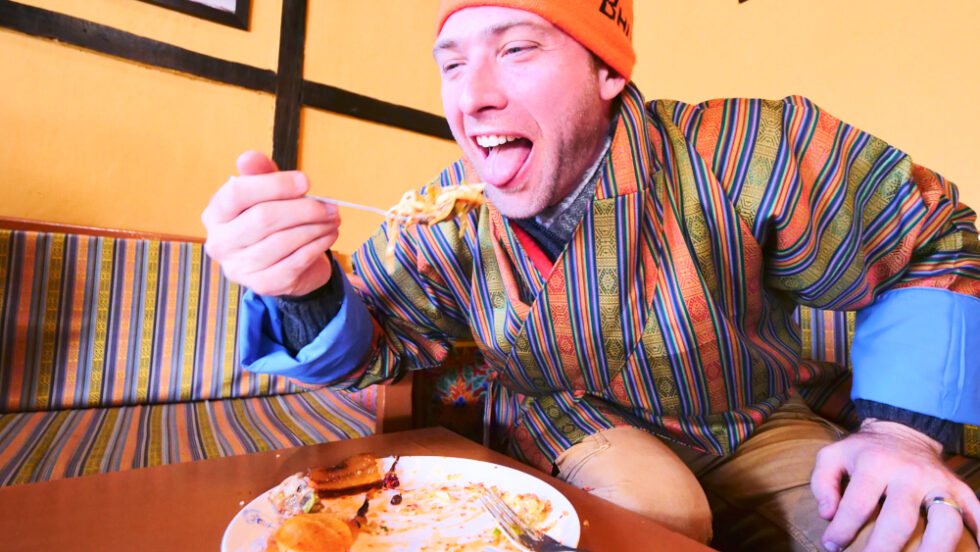
Then, we left for a 17th-century fortress called Tashiccho Dzong, but not before we bought a bottle of ara! Tashiccho Dzong is a fortress and monastery that was built by the unifier, the Tibetan scholar who arrived in Bhutan that century. After the capital was moved to Thimphu in 1962, the fortress was enlarged and the new complex was consecrated in 1968.

I had to take off my gho because it has to be 100% traditional when you visit the fortress. The fortress was massive with a huge flag out front with two royal guards below it. The fortress was super impressive, beautiful, and colorful. We had to show our bags and camera and go through a metal detector to go inside.
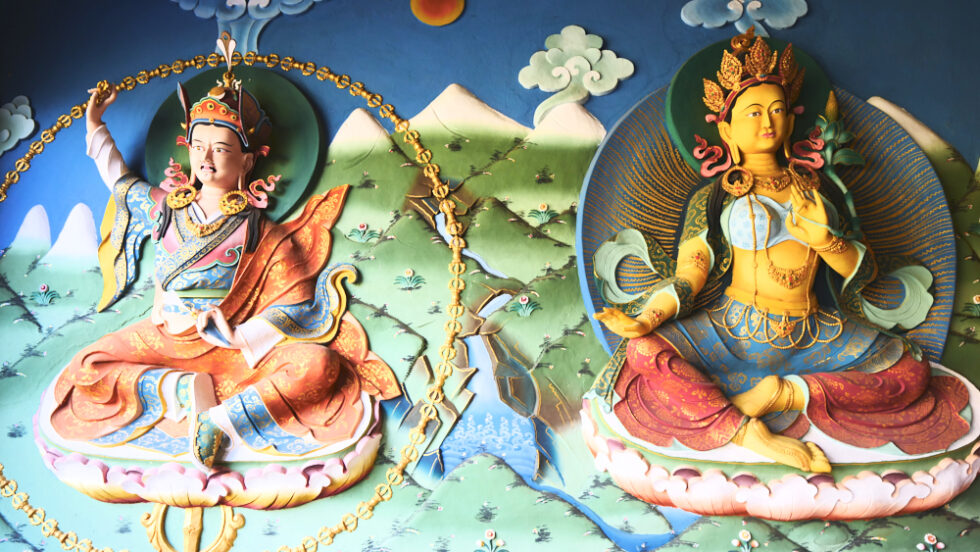
Inside were gorgeous paintings and depictions of the walls of dragons, the god of energy, and many others. There’s also a huge courtyard where they used to perform the festival that they now do in Punakha. There’s also a temple. The fortress is divided into two sections: the religious and administration areas. Visitors can only visit the religious area.
There are over a dozen beautiful monasteries inside the fortress. You can see elephants, tigers, Garuda, and snow leopards depicted on their exteriors. I couldn’t take photos or videos inside the temple, where we saw about 50 monks chanting inside as well as the Buddha, the unifier, and the second Buddha. What an amazing Bhutanese village food experience in Thimphu, Bhutan!
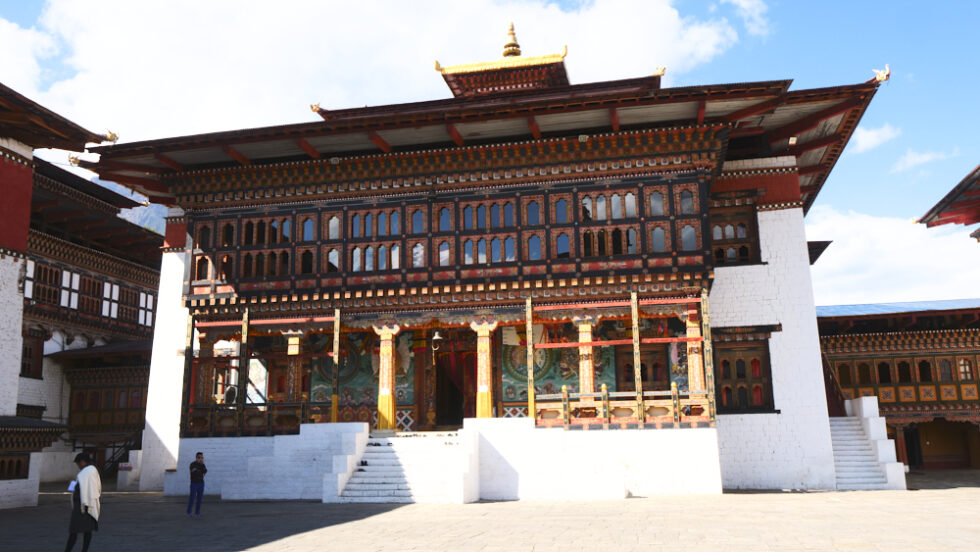
I hope you enjoyed coming with me on my Bhutanese village food adventure in Thimphu, Bhutan! If you did, please give this video a thumbs up and leave a comment below. Also, please subscribe to my YouTube channel and click the notification bell so you don’t miss any of my travel/food adventures around the world!
Counter
101 Countries • 1432 Cities